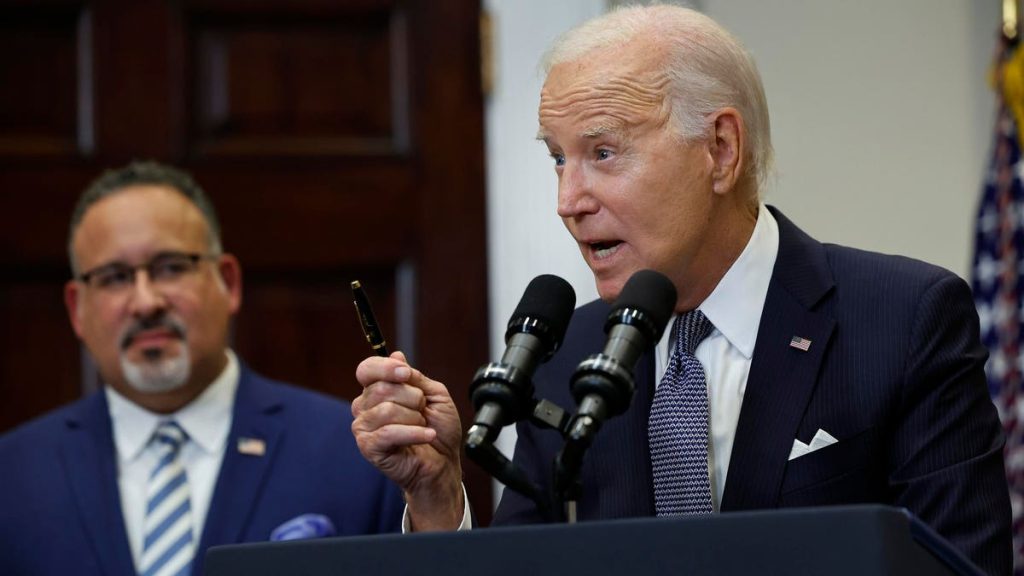Millions of borrowers are experiencing a slew of developments as they barrel toward the return to repayment. The student loan pause had frozen interest and suspended payments for over three years. But that relief has now come to an end, and borrowers are facing a dizzying maze of student loan forgiveness, repayment, and relief initiatives to navigate.
Here’s the latest.
Student Loan Payments Resume Soon As Interest Accrual Begins
The student loan pause officially ended on August 31. Interest began accruing immediately the following day. So federal student loan borrowers who benefited from the moratorium have already started seeing their balances increase due to interest accrual.
That said, the first federal student loan payments won’t be due until sometime in October for most borrowers. Loan servicers will start sending out billing statements in the coming weeks.
Student Loan Forgiveness Under IDR Account Adjustment Continues
While millions of borrowers will be receiving bills in the next few weeks, over 800,000 borrowers won’t after they received student loan forgiveness under the IDR Account Adjustment last month. The Education Department determined that these borrowers reached the 20- or 25-year threshold for loan forgiveness under income-driven repayment, or IDR, plans after receiving retroactive credit under the initiative’s temporary flexibilities.
Implementation of the IDR Account Adjustment is ongoing. Over 600,000 additional borrowers have received debt relief through Public Service Loan Forgiveness under the flexibilities of the adjustment, according to the Education Department. And the next group of borrowers eligible for IDR student loan forgiveness under the program could be notified sometime this month — just in time for them to avoid having to make payments on their loans in October.
Biden Administration Works On Student Loan Forgiveness Backup Plan
The IDR Account Adjustment is not the only student loan forgiveness program that is a focus for the Biden administration. Officials are also working to develop a broader student loan forgiveness plan designed to replace the one that was rejected by the Supreme Court earlier this summer.
The new loan forgiveness program is still in its very early stages of development. But last month, the Education Department released new details on the process and timeline for creating the new student debt relief plan. The initiative is still likely many months away from being finalized, but borrowers can participate in the ongoing public process for establishing the program’s parameters.
Biden’s New Student Loan Payment Plan Is Officially Available
Borrowers who don’t qualify for immediate student loan forgiveness will need to start making payments this October. To ease the transition back to repayment, the Biden administration has officially launched the Saving on a Valuable Education, or SAVE, plan. Officials are calling this the most affordable IDR plan in history.
At least four million borrowers have already enrolled in SAVE, according to Education Department data released last week. “I’m thrilled to see so many Americans submitting applications every day so that they, too, can take advantage of the most affordable student loan repayment plan in history,” said Miguel Cardona, Secretary of Education in a statement.
The Biden administration has launched a comprehensive outreach campaign involving multiple outside organizations to get people to sign up for SAVE. SAVE will lower the monthly student loan payments for many borrowers, and will also eliminate interest accrual that exceeds those payments.
GOP Seeks To Repeal Biden’s Student Loan Plan
While the Biden administration is rolling out the new SAVE plan, congressional Republicans will try to repeal it. Last week, House and Senate GOP leaders unveiled a Congressional Review Act resolution to block SAVE from going into effect, calling it a “scheme will leave mountains of debt at the feet of taxpayers.”
The resolution only needs simple majorities to pass the House and Senate. However, the effort is almost certain to face a veto by President Biden, and Republicans do not have sufficient numbers (even with a handful of potential Democratic defections) to override a presidential veto. A prior effort under the Congressional Review Act to repeal Biden’s earlier student loan forgiveness plan failed under similar circumstances earlier this year.
Education Department Adds Caveat To Student Loan Repayment Flexibilities
In addition to making the SAVE plan available, the Biden administration is trying to ease the return to student loan repayment by offering temporary flexibilities. During a 12-month “on-ramp” period, the Education Department will not report missed student loan payments as delinquent to credit bureaus, and will not place borrowers in default. “This prevents the worst consequences of missed, late, or partial payments,” says the Education Department.
However, the department recently added additional language to its on-ramp guidance suggesting that borrowers could potentially still incur credit damage. “We will not report you as delinquent during the on-ramp, but we do not control how credit scoring companies factor in missed or delayed payments,” says the department.
Importantly, missed student loan payments will not count toward student loan forgiveness for borrowers in income-driven repayment plans or for those on track for Public Service Loan Forgiveness.
Further Student Loan Forgiveness Reading
Education Department Suggests More Student Loan Forgiveness Approvals This Month
Timeline For Biden’s New Student Loan Forgiveness Plan Gets Clearer
Biden Administration Announces $72 Million In Student Loan Forgiveness
Student Loan Forgiveness Update: What The Latest Court Victory Means For Borrowers
Read the full article here




